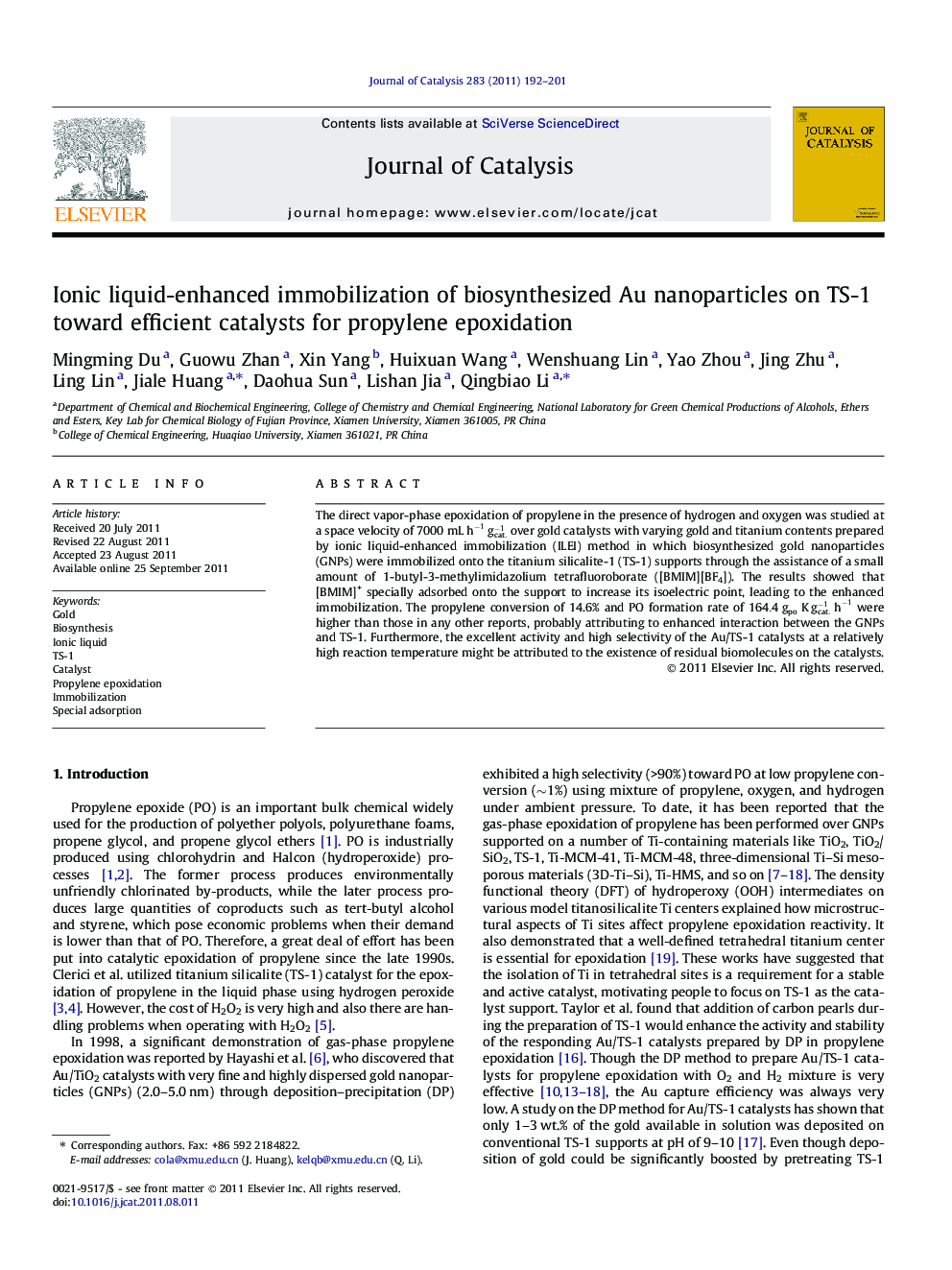| Article ID | Journal | Published Year | Pages | File Type |
|---|---|---|---|---|
| 61700 | Journal of Catalysis | 2011 | 10 Pages |
The direct vapor-phase epoxidation of propylene in the presence of hydrogen and oxygen was studied at a space velocity of 7000mLh-1gcat.-1 over gold catalysts with varying gold and titanium contents prepared by ionic liquid-enhanced immobilization (ILEI) method in which biosynthesized gold nanoparticles (GNPs) were immobilized onto the titanium silicalite-1 (TS-1) supports through the assistance of a small amount of 1-butyl-3-methylimidazolium tetrafluoroborate ([BMIM][BF4]). The results showed that [BMIM]+ specially adsorbed onto the support to increase its isoelectric point, leading to the enhanced immobilization. The propylene conversion of 14.6% and PO formation rate of 164.4gpoKgcat.-1h-1 were higher than those in any other reports, probably attributing to enhanced interaction between the GNPs and TS-1. Furthermore, the excellent activity and high selectivity of the Au/TS-1 catalysts at a relatively high reaction temperature might be attributed to the existence of residual biomolecules on the catalysts.
Graphical abstractBiosynthesized gold nanoparticles (GNPs) were immobilized onto TS-1 through 1-butyl-3-methylimidazolium tetrafluoroborate ([BMIM][BF4]). [BMIM]+ specially adsorbed onto the support to increase its isoelectric point, leading to the enhanced immobilization and high activity and stability for propylene epoxidation with H2/O2 mixture, probably attributing to enhanced interaction between the GNPs and TS-1 and the role of residual biomolecules in protecting the GNPs thereof.Figure optionsDownload full-size imageDownload high-quality image (45 K)Download as PowerPoint slideHighlights► The gold nanoparticles were prepared by biosynthesis method. ► Au nanoparticles were completely immobilized on TS-1 support with ionic liquid. ► Au/TS-1 catalysts exhibited high activity and stability for propylene epoxidation. ► About 4.6% of propylene conversion could be obtained. ► The isoelectric point of TS-1 could be changed by ionic liquid.
